-231232-edited.jpg)
One of the most common questions that B2B Content Marketing teams always ask is, “How do we come up with great content?”
New blog ideas and social media posts don’t just pop up out of nowhere. And it can be difficult to come up with clever, engaging, and valuable ideas for multiple content items per month, on a regular basis.
However, that doesn’t mean that developing valuable content is just “luck of the draw” either. Instead, if you know how to brainstorm, pay attention to your industry, and use the right tools, you’ll discover that there are endless possibilities for incredible content ideas just waiting to be discovered.
To help you get your content marketing strategy off on the right foot, we’ve compiled a list of seven simple but necessary steps to find inspiration and develop engaging content ideas.
1. Determine Your Buyer Personas
The first step is to figure out who your audience is. After all, how can you create effective content if you do not know who it is for? You must establish your buyer personas so that you can create articles, posts, tweets, and infographics that resonate with them.
These personas describe exactly who your ideal customers are including such things as their:
- Age
- Job title
- Goals
- Challenges
- Education background
- Communication preferences
Each piece of content you create should be dedicated to a specific buyer persona and his or her unique pain points.
You can develop your buyer personas quickly and easily with these free persona templates from HubSpot.
The key is to not try to create content that meets every buyer persona at once. Instead, create content that answers only one pain point at a time. In this way, you can more effectively answer your customer’s needs (and run more effective content campaigns).
2. Get to Know Your Ideal Customers
Now that you know who your target personas are, it’s time to get to know them better. You can do this by figuring out where they hang out online and learning more about what they discuss, questions they ask, etc. The better you get to know your target customers, the more likely you’ll be able to develop content that resonates with them.
So, how do you get to know your ideal customer? There are quite a few options:
Join Social Media Groups:
Within Facebook Groups, LinkedIn Groups, and similar niche communities, people talk about all kinds of things from industry news to pertinent topics and casual interests. By joining these groups, you can find out what is valuable to your audience. In particular, look for questions you can answer or pain points you can address.
Be Active on Social Media:
Beyond niche groups, your customer is using Facebook, LinkedIn,and other social media platforms for open communication. Take advantage of this by creating a list of ideal customers and following them on social media. Read the content they share, see how their followers engage, and determine how you can integrate similar topics and content pieces into your own mix. And don’t forget to look at popular industry hashtags as well.
One great tool to help you find the most relevant hashtags for your industry is Hashtagify.
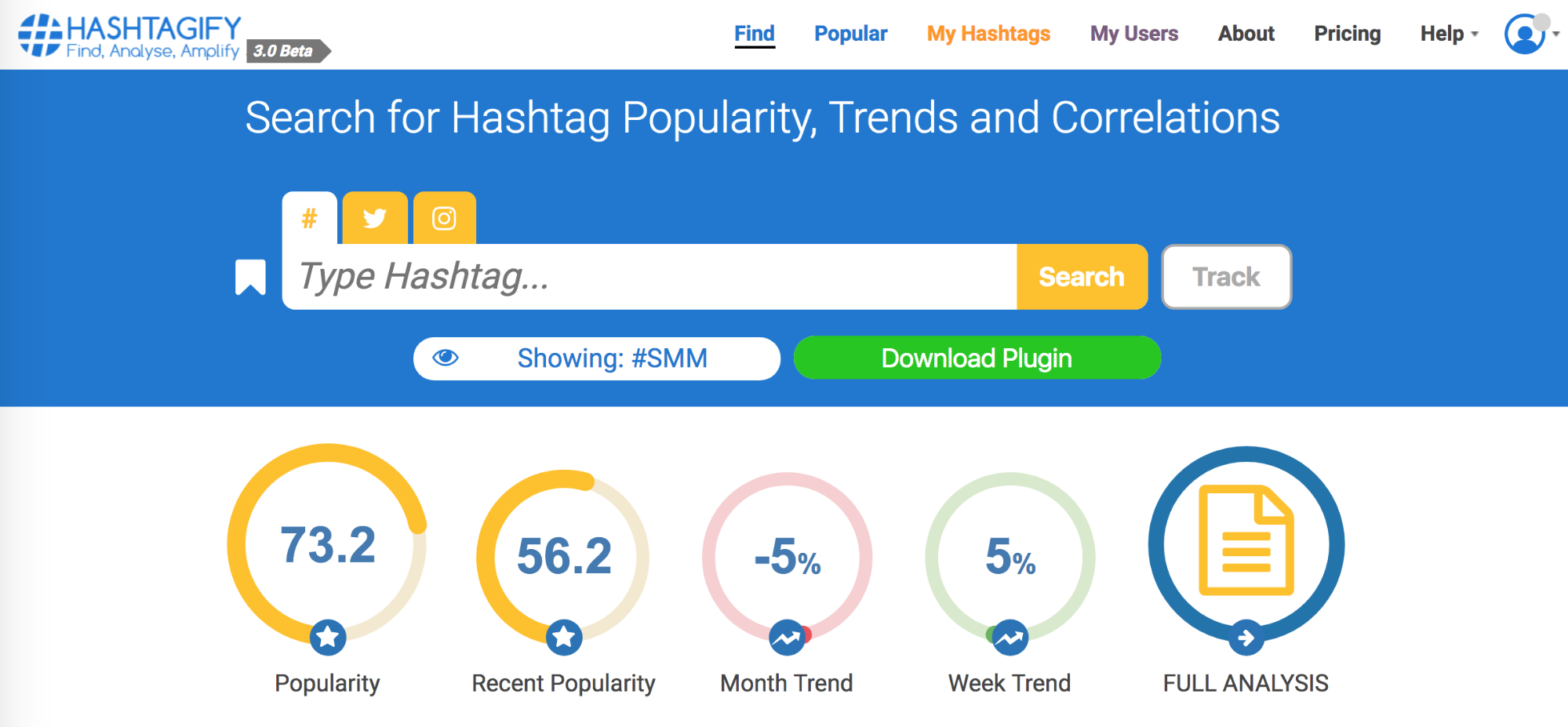
Hashtagify lets you search for popular hashtags and provides you with trending data and analyses.
Browse Forums:
Forums such as Quora, Yahoo! Answers, and others allow you to look deep into your industry to find questions that you can write about.
For example, in Yahoo!, When you type in “Finance” the top questions pop up. One immediate question that caught our eye was “What is the best book to learn the basics of finance/investing?”
This immediately makes us think about writing a blog discussing our favorite finance books, articles, and websites for help.

Industry Publications:
There are various magazines, news sites, and other industry publications that share the latest news, trends, tips, and advice from top industry professionals. These websites offer a plethora of ideas for content, particularly when you consider engagement. Take a look at the articles that receive the most comments, likes, and shares to get a better understanding of what topics are popular and should be discussed more in depth.
One tool that can help you with this is Buzzsumo, which makes it easy to see what content is shared the most online.
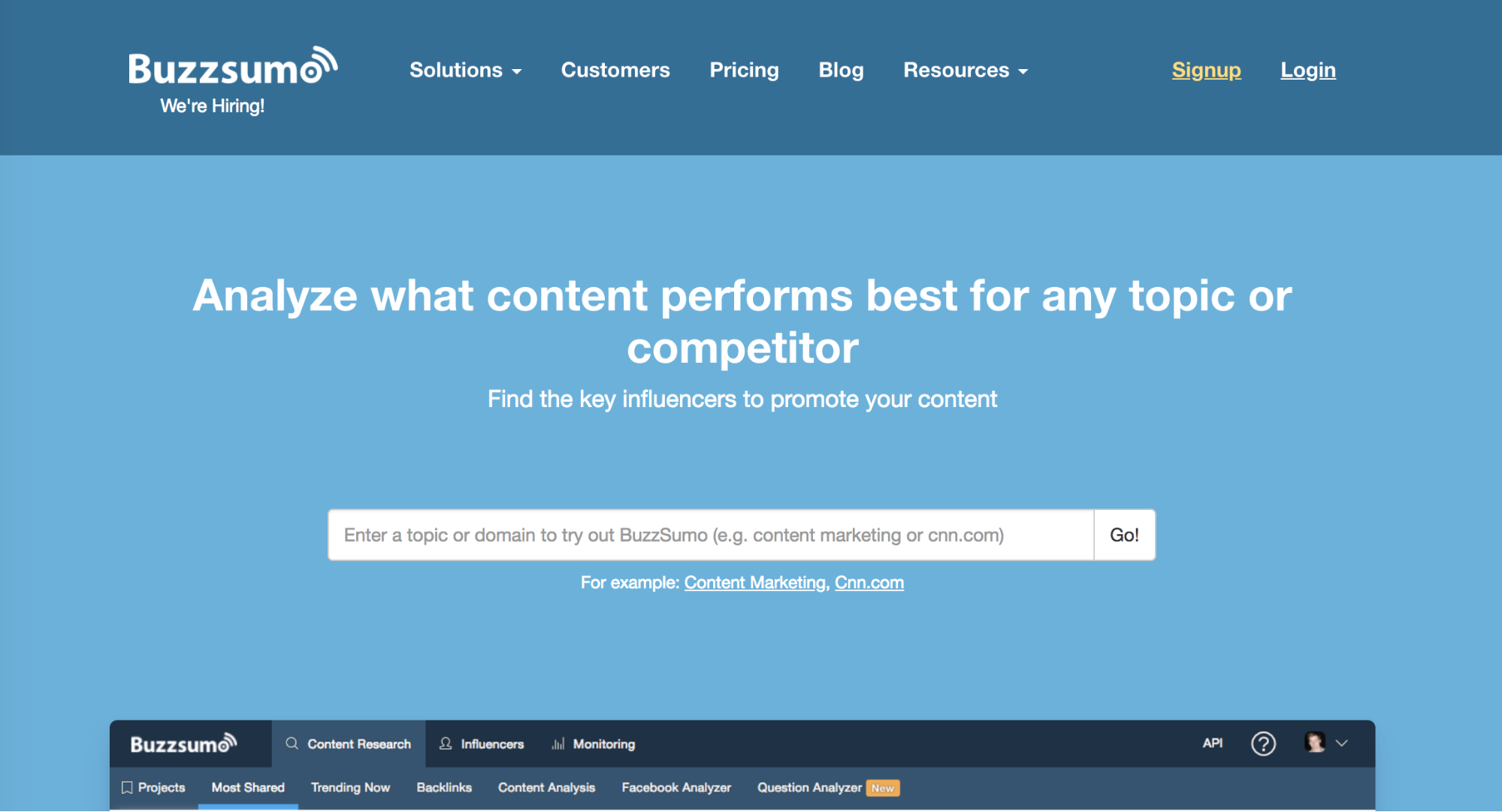
Ask Your Audience:
If you have a following on social media (no matter what size) or an email list, simply ask your audience what it is they’d be interested in reading about—SurveyMonkey makes it easy to send a survey. Some sample questions include:
- “What issues have concerned you the most lately?
- “What has been your biggest challenge at work recently?”
- “What is your #1 goal for this quarter?”
3. Complete Your Keyword Research
When it comes to creating content, SEO still matters. So why not use keywords to help you develop new content ideas?
For example, let’s go back to assuming that your buyer persona is a financial analyst. In Google, you could type, “business accounting” and let Google autofill do the rest. It’s easy to see that most often people ask about software, but there are also questions about classes, which means “how to” content could be valuable. As for “basics,” this could indicate a need for simple step-by-step guides to business accounting.
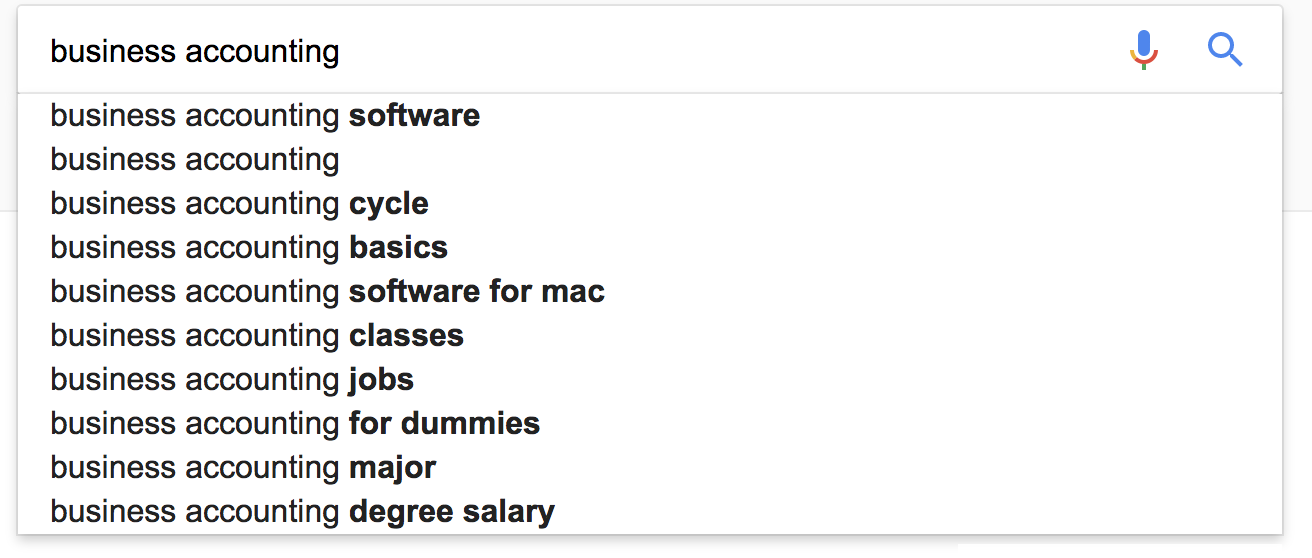
Then, at the bottom of the page, you can find the section with related searches. There are a few more options here, including a potential title for your next article: “How to do Accounting for Small Businesses.”

All of these related searches and autofill items in Google can give you new ideas for keywords and topics.
In addition, you can use tools such as the Keyword Tool or Ubersuggest, which provide you with a variety of keyword suggestions and ideas once you type in your own phrase.
For example, after typing in “business accounting,” Ubersuggest offers 909 similar keyword ideas along with their search volume, CPC, and competition. They might not all be relevant to your specific business, but many of them can help you come up with ideas for a great piece of content.
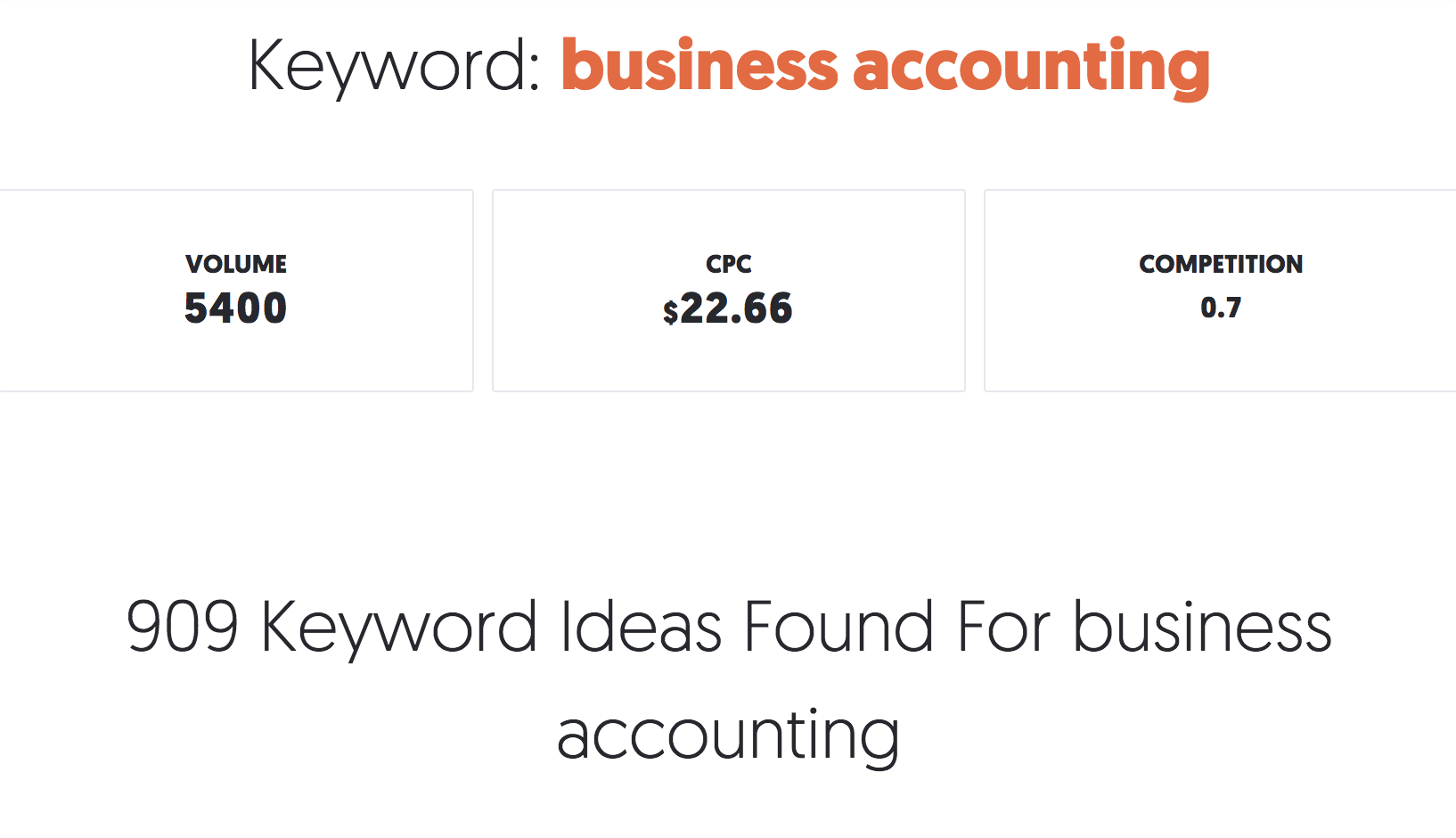
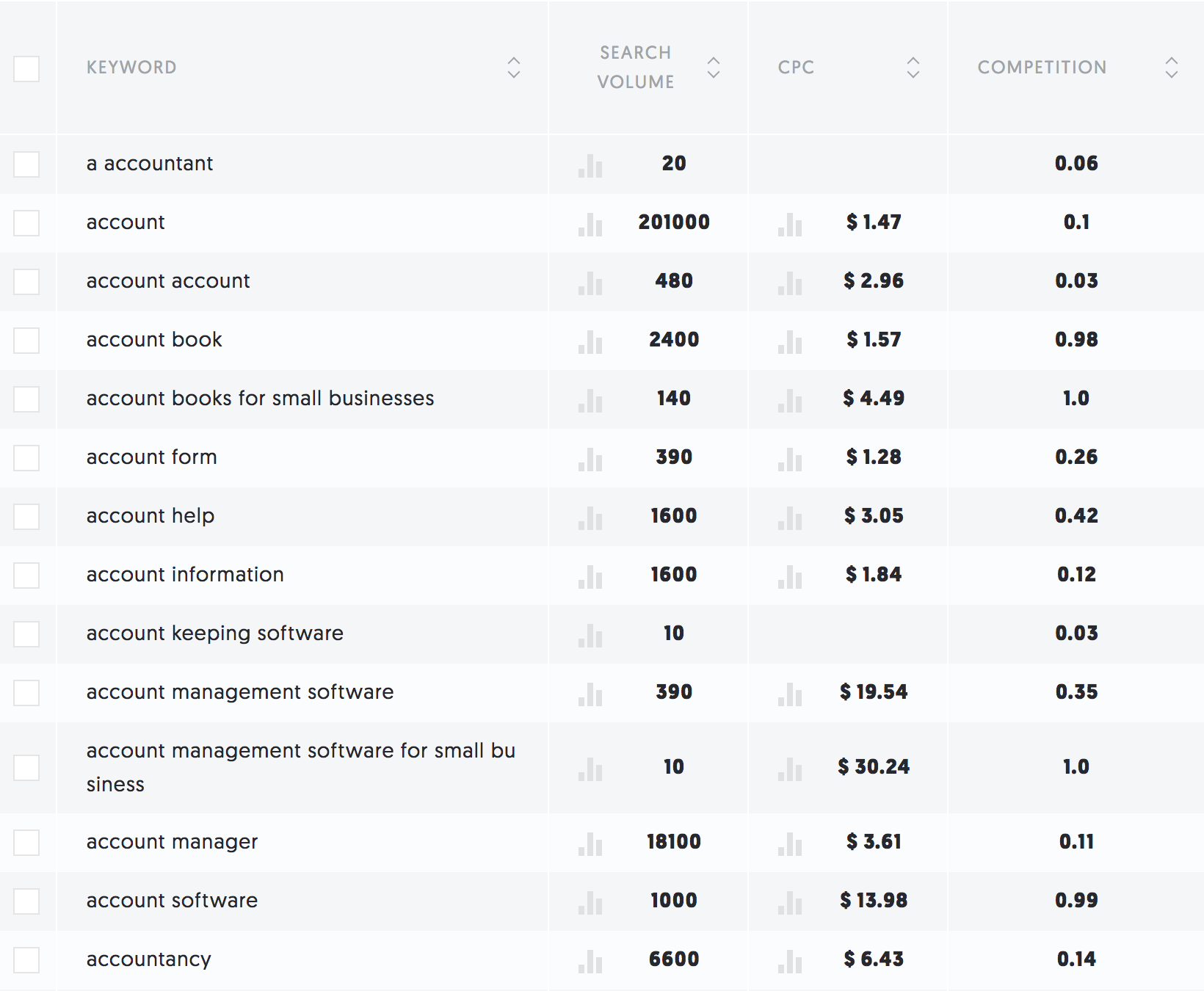
4. Look at Your Competitors
Just as you researched what your audience was talking about online in publications, on social media, and in forums, you should look at your competitors. Make a list of your top ten competitors and follow them on social media, read their weekly blogs, figure out who their CEO or marketing manager is and find their social media presence. Then, analyze their content.
Your competitors probably have many different ideas and topics that they’ve talked about. Don’t steal their ideas, but take what they’ve talked about as a guide (and do it better).
For example, if they wrote a beginner’s “how to” article, you can take that to the next level by going deeper, or writing a similar article for intermediate readers.
5. Interview Industry Influencers and Experts
Consider interviewing an industry influencer or expert to support your content creation. This can provide you and your audience with witty quotes, deep insight, and inspiring stories.
A few interview options include:
Q&A:
Hold a question and answer session with an industry expert and then share their responses piecemeal, or the entire interview can be a single content item.
Hot Trends:
Ask the influencer to share what trends they see in the industry.
Tips & Tricks of the Trade:
Experts always have great advice on how to do a job better. Ask them to share this with your audience.
Then, not only can you publish the interview, but you can also write various new content items based on the interview — take a topic that was touched upon and dive down deeper.
6. Use Online Tools
When you need extra help developing your content ideas, use a few of the many online tools available to you:
Portent:
This tool is invaluable for helping you come up with titles and topic ideas. Simply enter your subject and let the tool go to work.
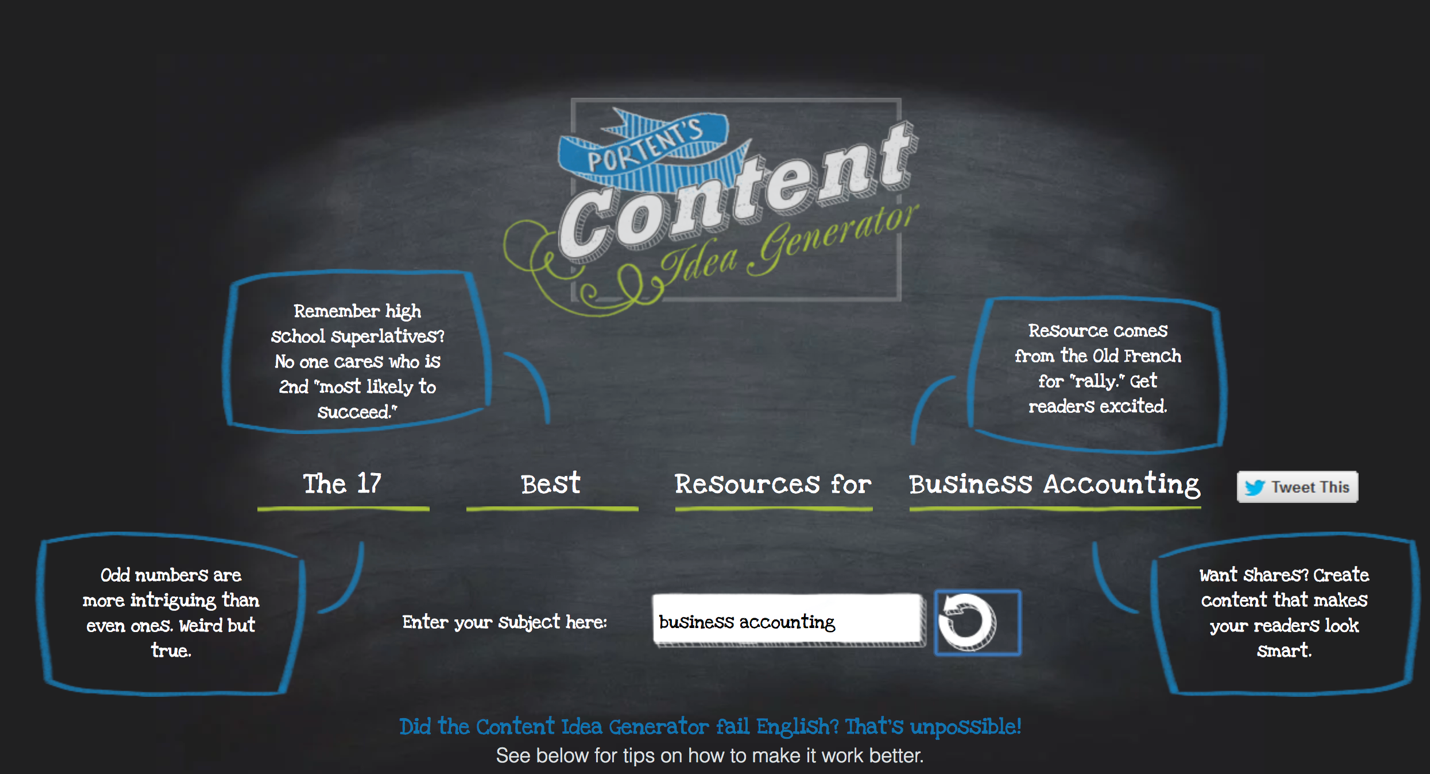
Scoop.it!:
This content marketing automation software can help you find popular content based on your keywords or recommend new keywords based on your current content performance. It also makes it easy to measure content performance.
HubSpot Topic Generator:
This free tool asks you to type in three nouns. From there, it provides you with five blog topics that you could conceivably use.
Google Trends:
Google Trends helps you quickly explore the most talked about topics of the day, so you can write content that’s on the cutting edge.
7. Develop Topic Clusters
Finally, there are topic clusters—an invaluable way to brainstorm topic ideas. Basically, you start with a single theme and come up with a general topic for a “pillar” content item. Pillar content items are the hub—the main topic—around which your content will be created. It’s the ultimate authority on a subject and is usually long-form content (around 2,000 or more words).
Next, you have the cluster content. These pieces of content represent more specific subjects relevant to the “pillar.”
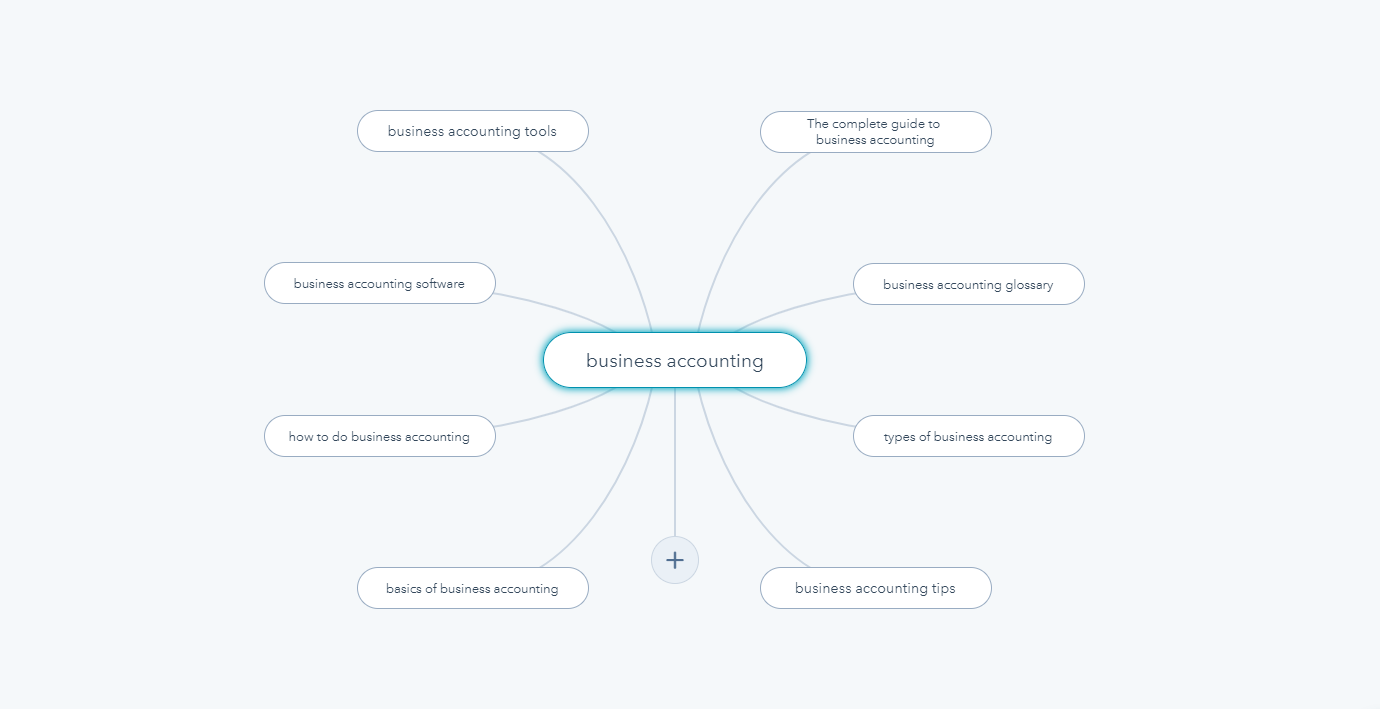
For example, let’s say “business accounting” is your main theme, and your pillar content item is “The Complete Guide to Business Accounting”. Your cluster content items would each go into more detail on a specific aspect of business accounting, such as tools to use for business accounts, how-to guides, best software, who to hire, planning tips, etc.
When you publish the cluster content items, link them back to the main pillar through hyperlinks. This encourages search engines to boost your rankings as an authority on the specific content theme you chose.
Conclusion
Developing new content ideas doesn’t have to be painful, and writer’s block doesn’t have to stop you. As long as you come at your content in a measured way, going through the steps to figure out what you can talk about, you should never run out of valuable ideas.
Still, if you need help, don’t hesitate to contact KeyScouts today. Our team of experts is here to help you plan out your content calendar as effectively as possible, so you’re website is always fresh and interesting.






